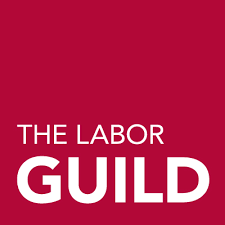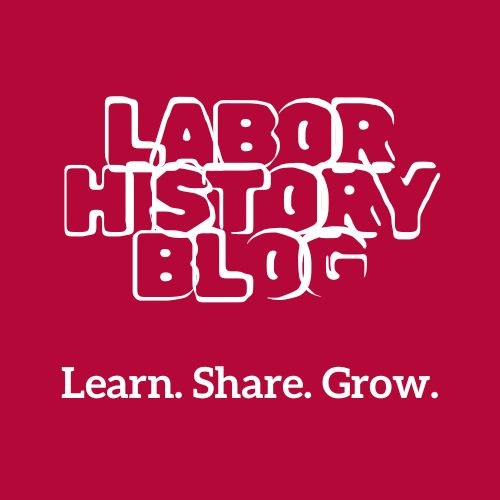January 2024 Labor History Blog
We are excited to announce a new blog series written by former Guild President and Executive Director, Dave Kowalski! Dave has taken the time to write a monthly blog featuring pertinent events in Labor history for each month of the year. We hope that these will serve to educate current and future members and students as well.
This is the first of twelve Labor History articles I will be producing this year. It is appropriate that I begin with the Bread and Roses Strike that began on January 11, 1912, in Lawrence, Massachusetts, as we now honor its 111th anniversary. This writing is just a taste of what happened. I could have written more extensively, however, space is limited. There have been many articles and books on this subject and it is well documented with pictures as well for those who feel the need to explore further.
Established in 1845 along the banks of the Merrimack River akin to the Lowell model, the lack of male workers who mostly worked on farms; operators focused on the farmer’s daughters to fill their workforce. To convince fathers to allow their daughters to work in the mills, they were promised a better life of work, social enrichment, spiritual enlightenment, and money that would help parents and siblings back on the farm. To an extent, some Mill owners delivered on this, as they provided churches and conducted both social and educational seminars and activities for workers.
By 1912, immigrant labor increased and so the demand for labor decreased, making the commodity more competitive. The supposed ideals that the Mill girl went to work for began to diminish. Faced with working more hours and having less time for leisure, workers clashed in favor of the influx of immigrants and cheaper labor.
The mechanization of the two-loom system enabled owners to speed up the pace of work, cut wages and lay off workers. Those who managed to work earned less than $9.00 for a 56-hour work week. A newly enacted law in Massachusetts requiring a reduced work week from 56 to 54 hours brought the worst fears of the mill workers, when Polish women working at the Everett Mills found their employer reduced their pay by 32 cents, which cut deeply into the workers’ food budget.
They shouted, “short pay” and with that, shut down the mill. Within a week, 20,000 of the 32,000 workers at the mills were on strike. With such poor wages, workers hit the streets to picket in shabby and barely warm clothes. For children, hats and mittens were intermittent and the need for them in January was obvious and with a diet of molasses and bread caused massive malnutrition.
The strikers, so militant and bold throughout the ordeal repeated. “Not only do we want bread, but we want roses too.” Hence, the term Bread and Roses.
The “Wobblies” officially known as the International Workers of the World was an anarchist organization. Immigrant workers were well seasoned to this type of rebellious activity.
Similar organizational tactics were well established in Europe. Due to the labor struggles of the day, they had come to believe that property owners would never give workers a living wage and the dignity to go with it. They believed the only way workers could achieve a fair deal was to take away their means of production.
It is important to note here: I know that anarchists and communism have gotten a bad rap throughout history and in most cases deservedly so. However, if it was not for the threat of revolution and overthrow of the government by the workers, there would never have been a labor movement or for that matter Labor Law.
Two prominent Wobbly leaders came to Lowell to assist their fight. Big Bill Haywood (1869-1928) was one of them. A knife accident as a young boy left him blind in one eye. At the age of nine Bill went to work in the Colorado mines. He became a union activist in the Western Mine Federation and shared the leadership of the organization. In 1902 he became so active in the Coal Wars that he was tried and later was acquitted for blowing up a train depot in Independence, CO killing 13 non-union workers.
The other leader, Helen Gurley Flynn born Elizabeth, (1890-1964) in Concord N.H. to socially radical parents, her father a Socialist and her mother a Feminist. She developed quickly as an orator and was first arrested in NYC for stopping traffic while advocating for the IWW when she was just 16. She fought hard for women’s rights and was very active in coordinating food kitchens and clothing for the strikers and the children. She helped create the American Civil Liberty Union (ACLU) and was the first woman president of the American Communist Party.
Big Bill Haywood and Helen Gurley Flynn came to town to rally and give support to the effort but were soon off to major cities seeking funds to establish soup kitchens and provide warmer clothing for the workers. The convergence of ethnicities bridged gaps of diversity as people recognized their plight as the same- despite their cultural differences- and helped to solidify the strike as the state militia hauled the men, women and children off to jail singing in protest. The Mill owners were nasty. Mill owner William Wood paid a local undertaker to plant dynamite among the militant strikers’ home and then called the police to have them arrested. This fact did not emerge until after the strike. Unfortunately, for the undertaker, he left his business literature in the box.
They even tried to frame IWW organizers for murder. When striker Anna LoPizzo was shot and killed, police arrested Wobbly organizers Joseph Ettor, Arturo Giovannitti, (who was out of town at the time) and Joseph Caruso (who was home eating dinner during the incident). Even though eyewitnesses did identify a police officer as the shooter, a trial took place where all three were found not guilty on November 26, 1912.
Wobblies were also organizing an exodus of children to surrogate families as far away as New York and Philadelphia to receive proper care. Planned Parenthood arranged for medical exams of the children finding most malnourished and in need of proper care. Hence, the reasoning for sending them away.
As these results made the major newspapers and magazines, police, mill owners and local officials feeling the negative pressure of bad press decided to halt any more children from leaving the city and what ensued was a conflict between police and mothers.
What ensued were reports and pictures of police clubbing mothers and tearing their children away from them so they could not board the train. Appalled by this situation, Mrs. Taft (the President’s wife) intervened by calling for a Senate Investigation and Hearing. The results showed a mortality rate for children in Lawrence at 50% by age six and 36% of the men and women who worked in the mill died by the time they were 25—(36 out of 100workers and half of the children under six).
The testimony of strikers and children describing horrible machinery accidents, along with the experience of the children, exposed the conditions in Lawrence enough to make the mill owners give in to the Union and meet their demands on March 14, 1912.
However, a few years later owners began to fire the militant workers and speed up reduced wages. The economic law of comparative advantage (synergies) and even cheaper wages to be sought eventually found its way South, where owners moved their mills to southern locations. This industry today still chases the lowest wage earners all over the world, whether it be in Europe, Asia, or South America.
This strike is impressive in several ways:
Mill owners thought by pitting one ethnic group against another they would fight among themselves to the owners’ benefit. The Wobblies were able to find translators to inform workers that they were all in the same boat. Starvation affects everyone equally and organized workers around the central issue that workers have organized around throughout history; “societal necessity.” Wobblies managed to keep workers focused on the core of their beliefs, a fair living wage and dignity in the workplace.
As has been stated by so many. “Those who do not heed the lessons of history are destined to repeat them”. In using the Bread and Roses as an example, this scenario has been repeated many times throughout our labor history.
Join Our Mailing List
For Guild news, Labor School updates, Workshops, and CGA information.

